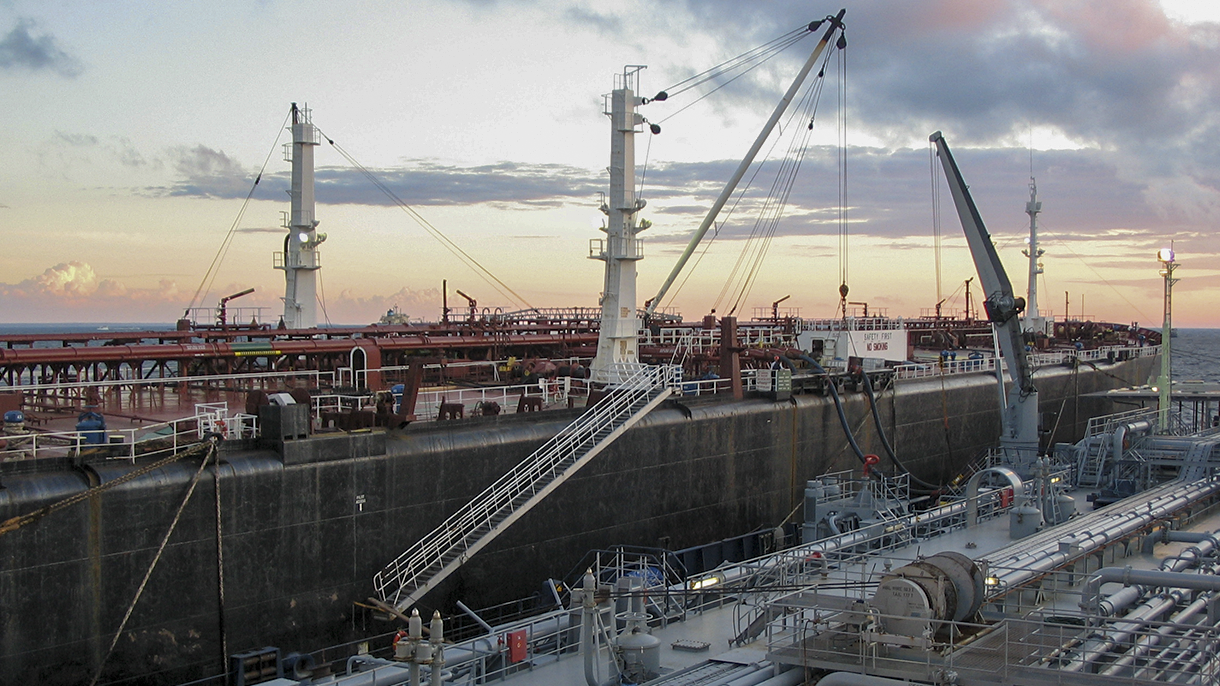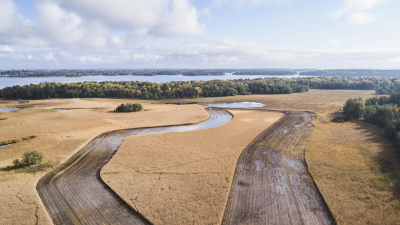The Chemical Tanker Project
The joint Chemical Tanker Project by the John Nurminen Foundation and Traficom aimed to reduce discharges of harmful substances into the Baltic Sea caused by the tank washing of chemical tankers. At the start of the project, a risk assessment was conducted to identify the most harmful chemical discharges associated with the tank washing of chemical tankers unloading their cargo in Finland. In collaboration with chemical industry companies, ports, and shipping companies, solutions were sought to minimize these emissions. In the spring of 2023, the project expanded to Sweden.

Chemical tanker in a port. Photo: Traficom
More information

The objective is to reduce discharges of hazardous chemicals into the Baltic Sea
When a tanker carrying liquid bulk cargoes – that is, chemicals – washes its tanks, this can result in the discharge of hundreds of litres of harmful and hazardous chemicals into the sea in one go. After unloading their cargo, chemical tankers often wash their tanks with seawater en route to the next port of loading. According to international legislation, washing water containing chemicals can be discharged into the sea within certain limitations. The ship must be travelling at least 12 nautical miles (approx. 22 km) from the nearest land and the depth of the sea must be at least 25 m. In practice, this means that in the shallow Gulf of Finland, for instance, tank washing has to be carried out in a relatively small area of the sea.
Even though the washing water is diluted when it mixes with the Baltic Sea, it is advisable to avoid discharges of harmful substances. Our foundation wants to ensure that avoidable chemical flows do not burden the Baltic Sea.
The Chemical Tanker Project aimed to identify the most hazardous and harmful chemical discharges associated with tank washing in chemical tankers operating in Finnish and Swedish ports. At the same time, the project sought solutions to reduce even permitted emissions. The project was carried out by the John Nurminen Foundation in cooperation with Traficom (the Finnish Transport and Communications Agency), the Swedish Transport Agency, and the Coalition Clean Baltic (CCB).
Identifying the most harmful chemicals and their quantities
At the start of the project, a risk assessment was conducted to identify chemicals posing the greatest potential risk to the marine environment and human health. The assessment considered the environmental toxicity of chemicals, their hazards to human health, and their discharge volumes in Finland. Based on the findings, the project focused on finding solutions to reduce cargo residue discharges of styrene, crude tall oil, and benzene. These substances are used in the chemical industry for producing plastics, paints, adhesives, and biofuels. Additionally, a similar risk assessment was initiated in Sweden.
Seeking solutions to reduce emissions in cooperation with various actors
Collaboration with ports, chemical industry companies, and other stakeholders played a key role in identifying the best methods for reducing chemical emissions. Together with the chemical industry, the project gathered information on various tank cleaning methods and explored opportunities for wastewater treatment and reuse. Once the best practices were identified, they were introduced to companies through workshops specifically tailored for companies handling the same chemicals.
Chemical discharges from tank washing can be reduced by improving tank emptying and washing methods as well as by treating tank washing waters more effectively. For instance, cost-effective onshore treatment solutions already exist for crude tall oil and styrene, allowing cargo residues to be reused instead of being discharged into the sea.
As a significant result of the project all Finnish crude tall oil company, the only benzene using company and ½ styrene using companies committed to responsibly managing their tank washing waters onshore. As a result, these tankers in Finnish ports no longer discharge chemical residues into the Baltic Sea. Given the increasing import volumes of crude tall oil to Finland, the industry recognized the need for cooperation to prevent cargo residues from entering the marine environment.
The project also promoted the reduction of tank washing discharges on an international scale. Together with Traficom, CCB, and the Swedish Transport Agency, efforts were made to advance measure S16 under the Baltic Sea Action Plan (BSAP) of the Helsinki Commission (HELCOM), which focuses on reducing chemical emissions into the Baltic Sea. Through international cooperation, progress was made in conducting risk assessments in other HELCOM countries, as well as exploring further measures to reduce chemical discharges across the Baltic Sea region through EU and IMO measures.
Materials related to the project
In cooperation with





